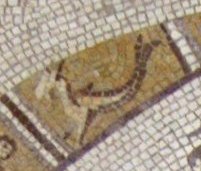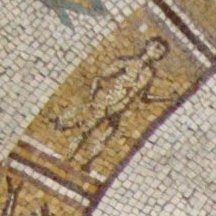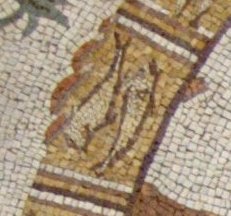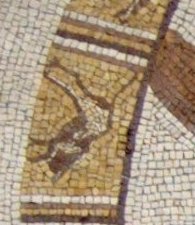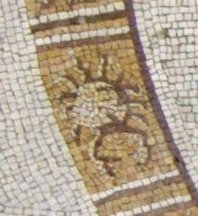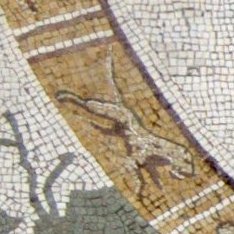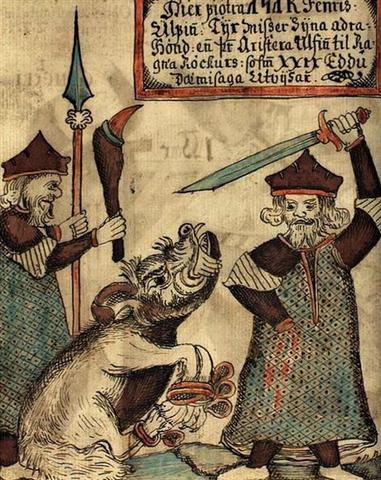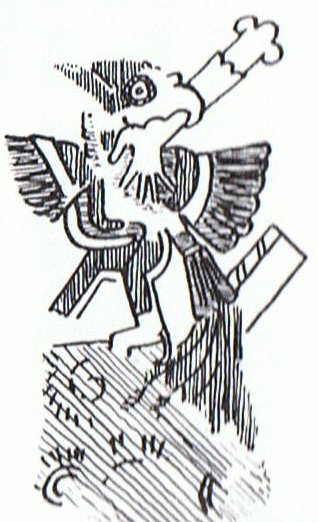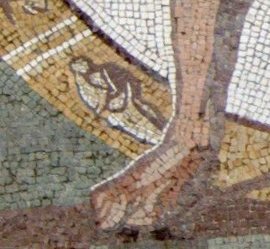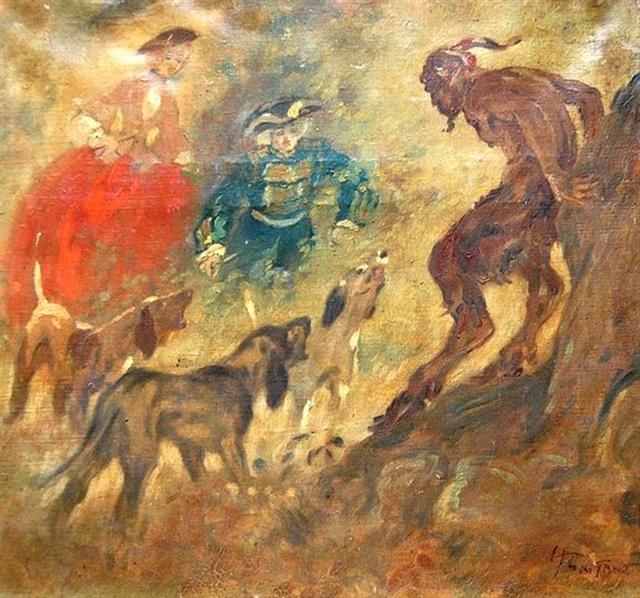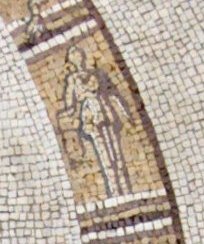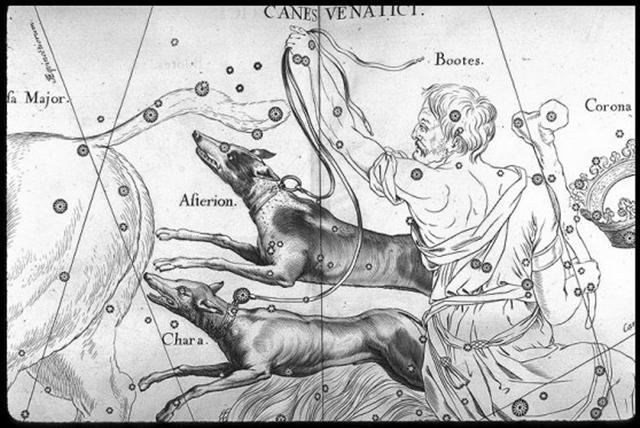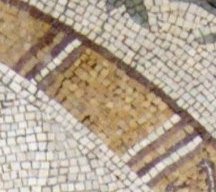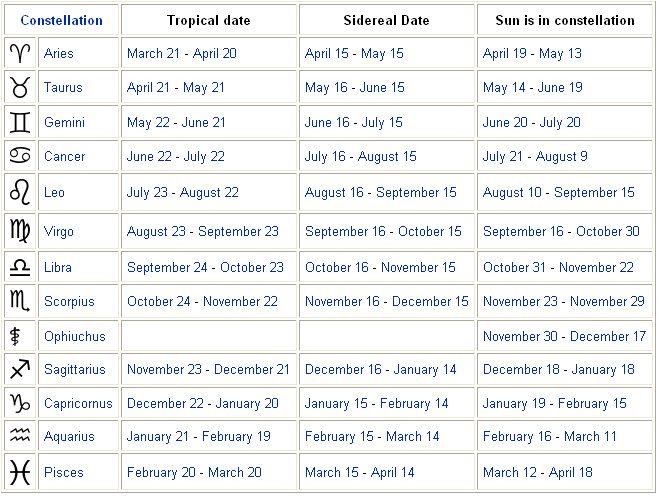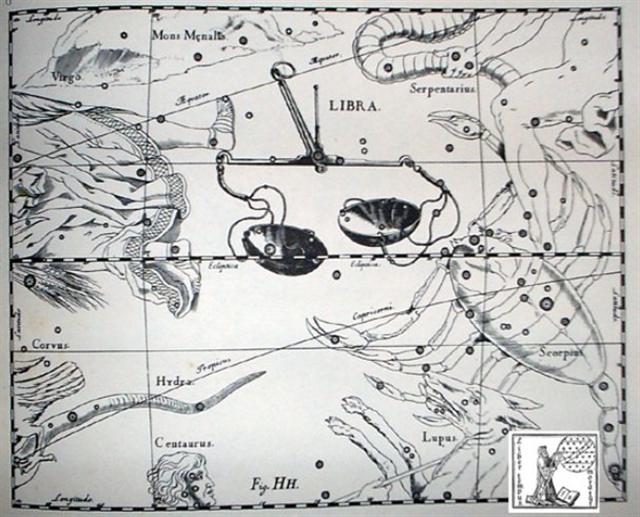This impressive Roman design evidently has Mother Earth down at the beginning of the shadowy side and the Virgo constellation down at the beginning of the front side of the cycle of the year:   In order to study the details I returned to the source of the picture and picked up a version with more pixels. However it is not possible to improve the details very much because the origin was a floor mosaic: .jpg) Four of the fingertips
of the right hand (= 84 - 80) remained outside zodiacal Pisces, and likewise the tip of the thumb remained on the inside (= 365 - 364): ... Nut, whom the Greeks sometimes identified with Rhea, was goddess of the sky, but it was debatable if in historical times she was the object of a genuine cult. She was Geb's twin sister and, it was said, married him secretly and against the will of Ra. Angered, Ra had the couple brutally separated by Shu and afterwards decreed that Nut could not bear a child in any given month of any year. Thoth, Plutarch tells us, happily had pity on her. Playing draughts with the Moon, he won in the course of several games a seventy-second part of the Moon's light with which he composed five new days. As these five intercalated days did not belong to the official Egyptian calendar of three hundred and sixty days, Nut was thus able to give birth successively to five children: Osiris, Haroeris (Horus), Set, Isis and Nepthys ... Below Pisces should be Aries, Taurus, Gemini, Cancer, Leo, and Virgo: 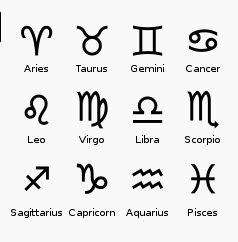 However, Aries appears to be missing:
Presumably it meant the central figure was representing Aries - not visible in the zodiacal band of the night sky because of the northern spring equinox (close to the Sun) which currently had been located here, viz. at the First Point of Aries (at the 'Heart' of Mars, Tyr as in Tuesday), where the Opener of the Way (Upwaut, the Wolf-god ruled):
The right foot of Aries was planted upon Virgo:
I.e., on Mons Maenalus:
... Mons Maenalus, at the feet of Bo÷tes, was formed by Hevelius, and published in his Firmamentum Sobiescianum; this title coinciding with those of neighboring stellar groups bearing Arcadian names. It is sometimes, although incorrectly, given as Mons Menelaus, - perhaps, as Smyth suggested, after the Alexandrian astronomer referred to by Ptolemy and Plutarch. The Germans know it as the Berg Menalus; and the Italians as Menalo. Landseer has a striking representation of the Husbandsman, as he styles Bo÷tes, with sickle and staff, standing on this constellation figure. A possible explanation of its origin may be found in what Hewitt writes in his Essays on the Ruling Races of Prehistoric Times: The Sun-god thence climbed up the mother-mountain of the Kushika race as the constellation Hercules, who is depicted in the old traditional pictorial astronomy as climbing painfully up the hill to reach the constellation of the Tortoise, now called Lyra, and thus attain the polar star Vega, which was the polar star from 10000 to 8000 B.C. May not this modern companion constellation, Mons Maenalus, be from a recollection of this early Hindu conception of our Hercules transferred to the adjacent Bootes? The 8 constellation panels on the front (facial) side are balanced against similar panels on the opposite side of the year, but only 5 such. I guess: 273 / 13 = 21, 8 * 21 = 168, and 5 * 21 = 168 - 63. 16 * 21 = 336 for the whole cycle ending with December 2 (4 * 84 = 48 weeks). 365 - 336 = 29.
The last panel, that between the Scorpion and the Capricorn should correspond to Sagittarius, where the Galactic River ('Serpent') crossed over the zodiac, hiding it with its 'milk'. ... The Galaxy, or Milky Way, is said to have been formed when the milk of the Great Goddess Rhea of Crete spouted abundantly into the sky after the birth of the infant Zeus ...
... Men's spirits were thought to dwell in the Milky Way between incarnations. This conception has been handed down as an Orphic and Pythagorean tradition fitting into the frame of the migration of the soul. Macrobius, who has provided the broadest report on the matter, has it that souls ascend by way of Capricorn, and then, in order to be reborn, descend again through the 'Gate of Cancer'. Macrobius talks of signs; the constellations rising at the solstices in his time (and still in ours) were Gemini and Sagittarius: the 'Gate of Cancer' means Gemini ... ... I wan't a clean cup, interrupted the Hatter: let's all move one place on. He moved as he spoke, and the Dormouse followed him: the March Hare moved into the Dormouse's place, and Alice rather unwillingly took the place of the March Hare. The Hatter was the only one who got any advantage from the change; and Alice was a good deal worse off than before, as the March Hare had just upset the milk-jug into his plate ... The front side of the zodiacal band was out in the light and the back side of the band was on the inside. The reversal of the loop at the top was counterbalanced by an opposite reversal between Virgo and the Scorpion. According to the epoch of Bharani, we remember, it was Zuben Elgenubi (α Librae) at the right foot of Virgo which balanced 41 Arietis (Bharani):
|
|||||||||||||||||||||||||||||||||
